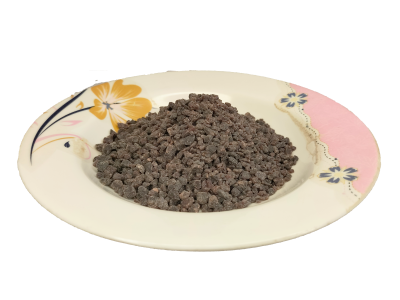Edible pink salt has emerged as a popular alternative to traditional table salt in recent years. Prized for its aesthetic appeal, unique mineral content, and purported health benefits, pink salt is often viewed as a versatile and health-conscious addition to kitchens worldwide. But what makes edible pink salt so special? This comprehensive guide explores its origins, composition, uses, and potential benefits, shedding light on why this natural marvel has gained such widespread popularity.
Algohar World natural salt lamps that are believed to provide various benefits, combining both the aesthetic appeal and the potential health advantages associated with Himalayan salt lamps.
What is Edible Pink Salt?
Edible pink salt is a naturally occurring salt that derives its distinctive rosy hue from trace minerals, primarily iron. Unlike refined table salt, pink salt is typically unprocessed and retains many of the natural minerals found in the salt deposits from which it is harvested. The most common source of edible pink salt is the Khewra Salt Mine in Pakistan, located in the Himalayan region, though similar salts can be found in other parts of the world.
Origins of Pink Salt
The Khewra Salt Mine, one of the oldest and largest salt mines globally, is believed to have been discovered over 2,000 years ago. Formed from ancient sea beds that crystallized millions of years ago, the salt extracted from this mine is considered one of the purest forms of salt available today. Its long history and natural purity make Himalayan pink salt a sought-after commodity.
Composition of Pink Salt
Pink salt contains over 80 trace minerals, including magnesium, calcium, potassium, and iron. These minerals not only contribute to its unique color but also offer various health benefits. Unlike table salt, which is primarily sodium chloride and often contains added iodine and anti-caking agents, pink salt is minimally processed and free of additives.
Culinary Uses of Edible Pink Salt
Pink salt has gained immense popularity in the culinary world due to its versatility and aesthetic appeal. Here are some of the ways it is used in cooking and food preparation:
As a Flavor Enhancer
Pink salt has a milder, less sharp taste compared to traditional table salt. This makes it an excellent seasoning for a wide range of dishes, from savory soups to sweet desserts. Its subtle flavor enhances the natural taste of ingredients without overpowering them.
In Gourmet Cooking
The striking color and coarse texture of pink salt make it a favorite among gourmet chefs. It is often used as a finishing salt, sprinkled on dishes just before serving to add both flavor and visual appeal.
Note: pink edible salt is more than just a trendy ingredient; it’s a natural marvel with a rich history and a wide range of uses.
Salt Blocks for Cooking
Pink salt is also sold in the form of salt blocks, which can be used as cooking surfaces. These blocks are heated and used to sear meats, seafood, and vegetables, imparting a subtle salty flavor to the food. They can also be chilled and used as serving platters for cold dishes like sushi or desserts.
Preserving Food
Due to its natural antimicrobial properties, pink salt has been traditionally used for preserving foods like meats and pickles. Its mineral content not only prevents spoilage but also adds a unique flavor to preserved foods.
Health Benefits of Edible Pink Salt
Proponents of edible pink salt often tout its numerous health benefits, though it’s important to approach these claims with a critical eye. Here are some of the potential advantages of incorporating pink salt into your diet:
Rich in Trace Minerals
Pink salt’s mineral content is one of its primary selling points. While the amounts of these minerals are relatively small, they contribute to the overall nutrient profile of the salt. For example, iron gives the salt its pink hue and supports healthy blood circulation.
Improved Electrolyte Balance
The potassium, magnesium, and calcium in pink salt can help maintain electrolyte balance in the body, which is essential for muscle function, hydration, and overall cellular health. Some people find pink salt particularly beneficial for replenishing electrolytes after intense physical activity.
Natural Detoxification
Advocates of pink salt often claim that it helps detoxify the body by binding to toxins and removing them through the digestive system. While scientific evidence supporting this claim is limited, the salt’s natural composition and lack of additives make it a cleaner alternative to refined salt.
Supporting Respiratory Health
Salt therapy, or halotherapy, has long been used to alleviate respiratory issues. Pink salt lamps and inhalers are popular for creating a salt-rich environment, which some believe can reduce symptoms of asthma, allergies, and bronchitis. However, these benefits are largely anecdotal.
Conclusion
Edible pink salt is more than just a trendy ingredient; it’s a natural marvel with a rich history and a wide range of uses. Whether you’re looking to elevate your culinary creations, enhance your wellness routine, or simply enjoy its aesthetic appeal, pink salt offers something for everyone. While it’s essential to approach health claims with a critical mind, there’s no denying that pink salt’s unique composition and versatility make it a valuable addition to any household. So go ahead, sprinkle a pinch of this rosy treasure and savor the natural goodness it brings to your life.
